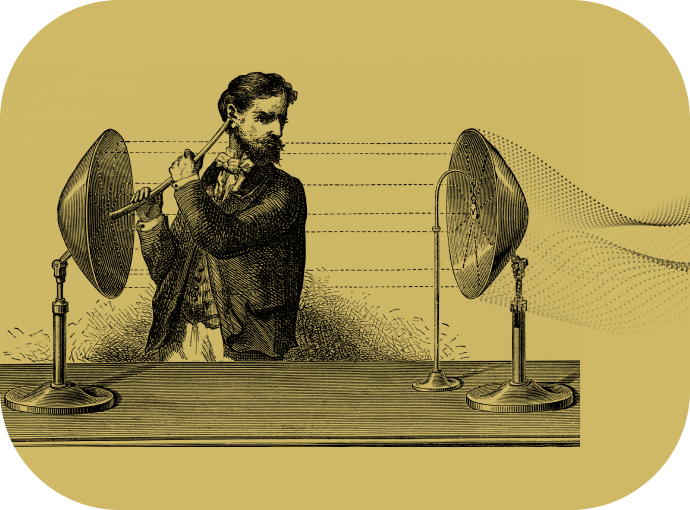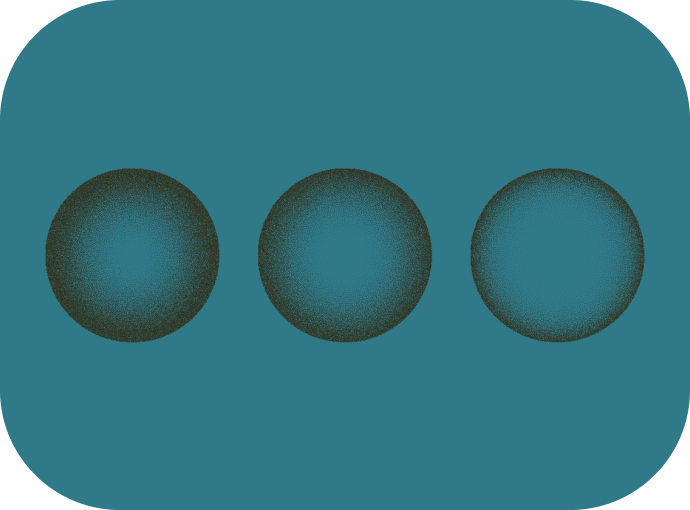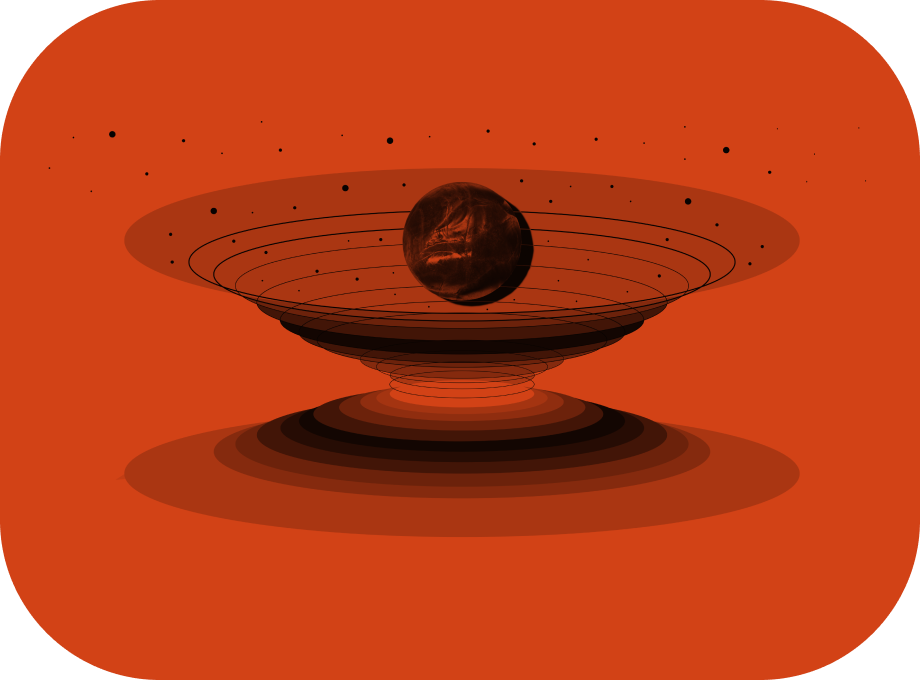


Short Summaries to give an idea of the content of the full article.

In 1900, Max Planck created the ‘quantum’, a math hack that he used to solve the important ‘black body problem’. The ‘quantum’ referred to the fixed amounts, ‘steps’ that replaced what had previously been seen as a smooth, continuous change. The math worked, but Planck – and Einstein, who used it to explain the ‘photoelectric effect’ – weren’t fans of the concept. The name ‘Quantum Mechanics’ was created (by Max Born in 1934) to make the point that it cranked out answers without picturing what was happening. For years, as the math led to a stream of breakthroughs, physicists could not agree a clear picture of what was going on.
Math does not describe what it refers to: it is universal. Three plus three equals six, whether eggs or elephants. With only math to guide, explanations of fundamental physics have often become complex, sometimes contradictory, and occasionally mystical. The recent confirmation of ‘non-locality’ between things that are ‘entangled’ has radically transformed what explanations are possible. We can now say what quanta are and simplify the physics behind the math.

The two foundations of modern physics are Maxwell’s equations and the Michelson-Morley experiment. In the equations, the speed of light is a constant. By comparing the speed of light from a moving source with light orthogonal to the direction of movement, the experiment showed that light was also always measured to move at the same speed.
From this discovery many concluded that there is no medium in the vacuum. But, while the medium moving past the emitter varies the wave’s speed, the MM test had the emitter moving through the medium, which produces different wavelengths (the Doppler effect) instead.
The only explanation that fits the experimental result of light’s invariant speed in a vacuum, is that light is a longitudinal wave, structurally similar to sound waves. All longitudinal waves move at a speed fixed by the medium they travel in. The Michelson-Morley experiment proved that light is a wave, so the vacuum must have a medium for it to move in. We suggest reasons why this simple, clear result has been so muddled for so long.

The vacuum has a fundamental Field. We know very little about this except that it has something that varies in value from the average and that it is turbulent or ‘choppy’, filled with small areas of higher and lower Field values (’bubblets’). Parts of the Field tend to equalise their values with neighbouring areas at the speed of the Field (aka the speed of light).
Fundamental or F-waves, such as light, are longitudinal waves of alternating low and high Field values that move at the speed of the Field, normally with a spherical wavefront. They behave like sound waves with crucial differences: they do not attenuate as the wavefront expands and, when they harmonise with a ball-wave, such as an electron, they transfer energy at one point only. We illustrate this with a fish-tank experiment and ‘quantum leaps’ with a whistle. (How longitudinal waves are polarised is explained in the Ninth Heresy.)
F-waves can exist in the same location as each other and the shorter the F-wave, the more energetic it is. F-waves have four interactions we know of: they can reflect off a material, their energy can be absorbed and emitted by harmonising with an electron, they can transfer momentum to atoms (the Compton effect), and, if sufficiently energetic, they can turn into an electron-positron pair.

A ball-wave is a reciprocating, ball-shaped wave, expanding out and falling back in, like a 3-D spring.
At high energies, we observe that F-waves break into pairs of ball-waves, like a thin stream of water from a tap that turns into individual drips. Two different types of ball-waves develop: the electron around the high Field value and the positron around the low Field value of the F-wave.
The internal wave of the ball-wave moves equally in all directions at the speed of the Field, so the overall ball-wave has no speed. Divergent surface Field values prevent other ball-waves occupying the same space – they act as particles. To move a ball-wave requires that its internal wave is shortened in the direction of movement, absorbing energy, to keep to the speed of the Field: inertia. These characteristics of ball-waves, stillness, solidity and inertia, we call ‘mass’.
Ball-waves sort the turbulent areas of the Field around them by attracting bubblets of the opposite values. This clustering attracts or repels other ball-waves, depending on type. When the ball-wave is stationary, the effect is known as electrostatic, when it moves it leaves a wake of bubblets that we call magnetic force.
Shortly after the start of the universe, the expanding F-waves collapsed into countless billions of ball-waves, like a bubble bursting into droplets. These were heavy forms of the electron and positron. The ‘heavy electron’ decays into ordinary electrons but the smaller ‘heavy positrons’ remained trapped by the strong force effect and stayed as protons. These are attracted to, but cannot react with, the much larger electrons. The relatively small, hard proton ball-waves end up sitting inside the softer, larger electron ball-waves, making atoms. The original F-waves also gave outwards momentum to the F-waves, so our universe is still expanding, along with a tiny remnant of the original F-waves we see today as the cosmic background radiation.

Protons are small, their energy is concentrated into about 1/2000 the size of an electron. Protons also stick together in the nuclei of atoms, despite their electromagnetic repulsion. This behaviour is explained by a ‘Strong Nuclear Force’ and a ‘Color Force’. These forces are part of the ‘standard model’, which requires 36 quarks and 8 gluons, none of them yet found after more than 50 years of looking. (Post facto, it was decided that they cannot be found.)
A fourth spatial dimension is not forbidden and has specific math implications. Four-dimensional forces diminish as the cube of distance, so they only affect things at the sub-atomic scale, but they also allow an extra degree of freedom, making objects small enough energetically stable. If a fourth dimension exists, it would generate the effect described as the ‘strong nuclear force’.
If more dimensions exist, the primordial F-waves would have first collapsed into minute, unreactive, very heavy ball-waves before a remnant went on to form protons and electrons. This fits neatly with 70% of the matter in the universe being ‘dark matter’.

It is often said that the Theory of (Special) Relativity means that ‘you cannot go faster than the speed of light’. The Theory actually says that all speeds are relative to your frame of reference, so, by definition, you cannot ‘go at’ any speed. We show how, accelerating at 1g, you would get to the centre of the galaxy, 26,000 light years away, in 11 years and how long it would take to return.
We explore the consequences of this, showing how very simple speeds applied to a Mississippi paddle steamer explain the ‘Time Dilation’ effect and how a couple of brothers on ships out at sea can illustrate the ‘Twins Paradox’.
We show how these effects link to ball-waves travelling at high speeds relative to us, expanding on earlier heresies.

Acceleration and Gravity are equal and opposite – acceleration separates things, gravity pulls them together again, returning the energy originally used to separate them. We show that all acceleration originates with the transfer of energy from lengthening F-waves.
Matter reduces the speed of the Field in its vicinity, giving rise to the appearance of the attractive force we call ‘Gravity’. We cannot see this on Earth because slowing the speed of the field also slows the speed of clocks, but we can see the effect in orbiting satellites, whose time goes faster than ours. This time difference means that the closer side of a rocket passing earth goes slower than the further side, bending its path round and giving the effect of an attractive force. The same effect applies to F-waves, so, although they have no mass, they are affected by gravity.

The Heretics confess their failings and the gaps in their world view and ask for help to redeem the ideas.

We follow the history of complexity being built up in stages. First, the collapse of matter into stars creates the energy imbalances that power the universe. Then complex elements are formed in stella furnaces and explosions, then complex compounds become possible on planets with liquids, when replication begins. Then single-celled living things develop, then complex ‘eucaryotic’ cells which require sex to defend against parasitism, then multi-celled animals, fungi and plants, then to the multi-animal communities of humanity.

We track the different meanings of this this term to explain why we avoid using it wherever possible, replacing it with ‘equilibrium’ or ‘homogeneity’. We explore the origin of the ‘low entropy’ or high heterogeneity of the early universe.

We show that probability is a state of knowledge, not a state of matter (less wittily than Schrodinger, but also less open to misinterpretation). So, however useful the math of probability is in making predictions, it cannot describe physical changes since probability can change purely on a change in information.
A series of articles that reframe the physical picture behind the mathematics. Best read in series, but each is independent.
Read The HeresiesHow longitudinal waves can be polarised. The structure of the atom.
Read these articles
Comments are welcome on the website
Although you will have to sign up as a Friend of the Heretics to post them and the group reserves the right to delete stuff arbitrarily. Direct contact is via the site to the Arch-Heretic, Jamie Cawley, on jamie.cawley3@gmail.com.